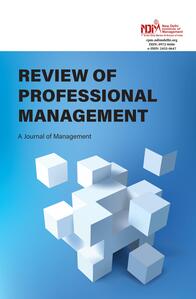
1 School of Management Studies, University of Hyderabad, Gachibowli, Telangana, India
Creative Commons Non Commercial CC BY-NC: This article is distributed under the terms of the Creative Commons Attribution-NonCommercial 4.0 License (http://www.creativecommons.org/licenses/by-nc/4.0/) which permits non-Commercial use, reproduction and distribution of the work without further permission provided the original work is attributed.
The Kumars of Salmora village in the south-eastern part of Majuli, Assam, India, are an example of a family managed business of handcrafting river clay pots. Salmora became the Kumhar village as a result of clay, which became the primary reason for the settlement of potters in the area. The hand-beaten pottery is a cottage industry of Majuli and has been passed down through generations. Currently, the policy restrictions and the dying art form have made people think about how to sustain the handicraft, their livelihoods woven around this art form, and continue their passion/skill in the given challenging situation. This makes it interesting to adopt the case research method to examine the struggle of small businesses to sustain their livelihoods, on the one hand, and the limited alternative sources of livelihood, on the other hand, thus making the survival and sustenance of the family business a challenge, where pottery was their family business for generations. The case discussion revolves around the problems, concerns and causes for the deterioration of the art forms and highlights the issues and challenges. It contributes to the resources in the emerging family business management literature and also the family businesses to strategise in similar contexts.
Family business, pottery, Northeast India, sustainable, livelihoods, traditional art forms
Dewani, U. (2016, September 24). Of broken pots and dreams. India Water Portal. https://www.indiawaterportal.org/articles/broken-pots-and-dreams
DFID. (2000). Sustainable livelihoods guidance sheets, Section 2. Framework.
Duary, N. (2008). Traditional Hira potters of lower Assam. Indian Journal of Traditional Knowledge, 7(1), 98–102. https://www.researchgate.net/publication/291627897_Traditional_Hira_potters_of_lower_Assam
Kamdars, P., & Bhuta, S. (2023, October 24). How family businesses in India are driving innovation and economic growth. The Economic Times. https://economictimes.indiatimes.com/news/company
Kollmair, M., & Gamper, St. (2002). The sustainable livelihood approach. Input paper for the integrated training course of NCCR north–south. Development Study Group. University of Zurich.
Neog, B. C. (2016, June 23). Majuli artisans keep ancient handmade pottery and centuries-old barter trade system alive. https://www.nezine.com/info/ZHpGMTA5az F6MGpQR3Y0dXpobU10Zz09
Rahman, A. P. (2015, December 10). Eroding Brahmaputra threatens Majuli’s unique pottery industry. The Third Pole. https://www.thethirdpole.net/en/culture/eroding-brahmaputra-threatens-majulis-unique-pottery-industry/
Shrestha, P. (2018). Challenges and scopes of pottery industry. Pravaha, 24(1), 147–158. https://doi.org/10.3126/pravaha.v24i1.20234